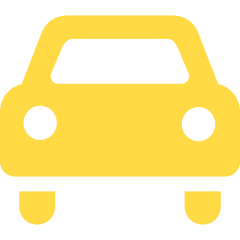Occasionally your vehicle can make noises in the front axle, you are very hardly ever reassured by this types of noise and you automatically tend to presume that you will lose a wheel or that the fix will cost you an massive sum. Then, what if you identify a noise coming from the front end of your Tesla Model S? It may not be much and you can resolve the problem yourself, but if in doubt it is better to check before a larger troubles happens. It is with this in mind that we have chosen to produce this article and allow you to find the problem and find a solution. We will, through several steps review all the elements that can make noises at the front end of your Tesla Model S. 
What are the elements that can cause front axle noise Tesla Model S?
Most of our article will focus on finding the element that gives your Tesla Model S front wheel noise. The following is a list of the components that are most likely to be generating it and how to confirm it.
Noise vibration front end Tesla Model S : the shock absorber cup
One of the most likely reason of symptoms on your Tesla Model S front axle noise is advanced wear and tear on your shock system. Indeed, the suspension cups, when they are dead, the rubber (silentblock) that acts as a buffer and shock absorber for the upper part of the suspension no longer assumes its role and during small jolts that compress the suspensions. To check if this is the problem that worries you, take a dented, slow-speed road and pay attention to the noise coming from your front end as you pass over holes. If these are the cups, consider changing them soon as this may affect other parts and require more expensive repairs.
Noise while turning front end Tesla Model S : stabilizer bar
If you detect of a noise on your Tesla Model S at the level of the front end when you are turning flat or going up on sidewalks for example, it is most likely connected to one of the parts of your stabilizer bar that is malfunctioning. To confirm the origin of the problem, you may feel a lack of stability in the direction of the vehicle (it pulls to the left or it pulls to the right). Furthermore, you can position yourself on one side of one of your front wheels then the other and try to shake your wheels strongly, if you hear a clicking sound it is highly imaginable that your silentblocks of stabilizer bar are dead. In this case, go to your garage.
Front axle noise when turning Tesla Model S : direction triangles
Finally, you may have a noise in the front wheel on your Tesla Model S, when you accelerate, brake or in a rather random but regular way. It is likely that the reason of this problem comes from the direction triangle or the direction hinges. Indeed, a damaged steering triangle will be testable during the acceleration phases when it will move away and the car will pull on the outside of the weak triangle (left triangle pulls to the left) and when braking towards the inside of the same side (left triangle pulls to the right). You can also check the condition of the swivel bellows visually, which may disrupt the action of changing direction. If you are in one of these cases go to your auto technician.
Loud noise front end Tesla Model S : bearings
One of the other likely causes of symptoms of the front axle of your Tesla Model S, may be that one of your rollings is tired, it will tend to make a thumping noise that intensifies when it is under stress (turns faster and faster). So make sure you check by taking speed (neutral and window open to hear only the noise of the wheels) that the noise is well located here, if this is the case replace it or them soon. If, on the other hand, this noise only appears with an engaged speed, read our article on loud noise on Tesla Model S, you will surely find an answer to your problem.
Front end noise squeaking Tesla Model S : cardan shaft
One of the most traditional causes when noise appears on the front axle of your Tesla Model S when you turn with your vehicle is in connection with the direction of your vehicle. Certainly, the gimbals and their bellows are parts that are continuously stressed during your changes of direction and a wear of one of them can create “Clac clac” type noises when you get closer to the stop zone of your direction. A bellows with holes will damage the cardan shaft very quickly and must be replaced very quickly, otherwise it will be necessary to change the entire cardan shaft. Remember to take a look at it and have it repaired if necessary. If it is rather a squeaking noise on Tesla Model S, do not hesitate to consult this article to find the solution to your problem.

